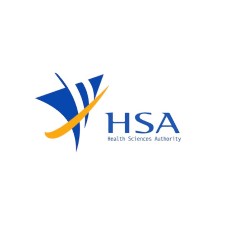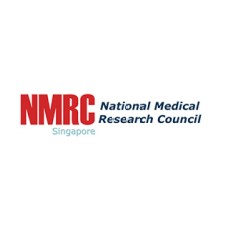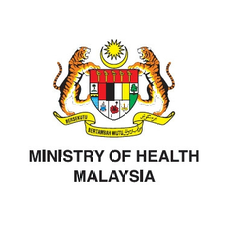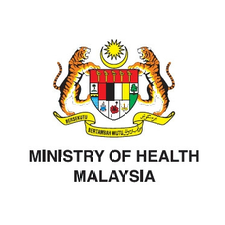ENT (ear, nose, and throat) STEM CELL THERAPY
Bridging Care, Building Trust
Revolutionizing ENT Care: Stem Cell Therapy for Ear, Nose, and Throat Disorders
ENT Conditions Treatable with Stem Cell Therapy
Stem cell therapy offers groundbreaking solutions for a spectrum of otorhinolaryngologic disorders by harnessing the body’s innate regenerative capabilities. Key treatable conditions include:
- Hearing Disorders: Sensorineural hearing loss (SNHL), tinnitus, and chronic tympanic membrane perforations.
- Nasal/Sinus Conditions: Chronic rhinosinusitis, allergic rhinitis, nasal polyps, and olfactory dysfunction.
- Airway Defects: Tracheal stenosis, subglottic stenosis, and bronchial defects.
- Laryngeal Pathologies: Vocal fold scarring, paralysis, and age-related voice changes.
- Oncologic Reconstruction: Tissue regeneration post-resection for head/neck cancers.
82% of chronic tympanic membrane perforations show complete healing with stem cell therapy vs. 30–40% with conventional grafts.
What Is ENT Stem Cell Therapy?
Stem cell therapy utilizes undifferentiated biological cells with dual regenerative properties:
- Self-Renewal: Unlimited replication while maintaining potency.
- Multilineage Differentiation: Ability to transform into specialized ENT cell types (e.g., cochlear hair cells, olfactory neurons, tracheal cartilage).
Key Cell Types:
Mesenchymal Stem Cells (MSCs)
Sourced from bone marrow or adipose tissue, MSCs have demonstrated potential in sinus repair and vocal fold regeneration. Preclinical studies show MSCs reduce scarring, enhance tissue pliability, and improve vibratory function of vocal folds by promoting healthier collagen and hyaluronic acid patterns
Olfactory Ensheathing Cells (OECs)
Harvested from the nasal mucosa, OECs are unique neural-support glial cells that foster nerve regeneration. Animal models of facial nerve injury report significant restoration of motor function, improved axonal growth, and enhanced myelination, supporting recovery after facial nerve or recurrent laryngeal nerve damage
Induced Pluripotent Stem Cells (iPSCs)
These are reprogrammed adult skin or blood cells with pluripotent capacity. In ENT applications, iPSC-derived otic epithelial progenitors (OEPs) have been shown to integrate into the cochlea, differentiate into hair cell–like structures, and form synaptic connections with auditory neurons—offering a pathway toward hair cell replacement for sensorineural hearing loss
Epithelial Progenitors
Sourced from respiratory mucosa, these progenitor cells can regenerate tracheal and airway epithelium. Experimental grafts in animal models have demonstrated successful survival and structural integration within tracheal defects, supporting functional tracheal reconstruction
Ethical Compliance
All MediBridge therapies use strictly non-embryonic sources—including adult and perinatal cells—eliminating any involvement of blastocyst-derived materials and ensuring full ethical integrity across protocols.
Key Scientific Features & Mechanisms
Triple-Action Regenerative Framework
- Direct Differentiation:
- MSCs transform into functional cells (e.g., cochlear hair cells, chondrocytes for tracheal rings).
- Paracrine Signaling:
- Secretion of growth factors (VEGF, FGF, BDNF) that:
- ↓ Inflammation in chronic sinusitis.
- ↑ Survival of spiral ganglion neurons in SNHL.
- Secretion of growth factors (VEGF, FGF, BDNF) that:
- Immunomodulation:
- Suppression of TNF-α, IL-6, and IgE in allergic rhinitis.
- Prevention of polyp recurrence post-sinus surgery.
Tissue-Specific Advantages
- Cochlea: MSCs secrete *neurotrophin-3* to regenerate spiral ganglion neurons.
- Trachea: Decellularized scaffolds + MSCs enhance mechanical stability vs. synthetic grafts.
- Vocal Folds: MSCs reduce collagen deposition, improving vocal pliability.
Clinical Implementation: From Lab to Patient
Sensorineural Hearing Loss (SNHL): Intratympanic Injection
For hearing loss due to inner ear damage, stem cells are injected directly into the middle ear (intratympanic route) so they can access the cochlea. Doses typically range from 10–20 million MSCs, administered over 2–3 sessions within six weeks. Though mostly used in preclinical models, animal studies show measurable improvements in auditory responses after such localized delivery, despite remaining experimental in humans.
Tympanic Membrane Perforation: Fibrin Gel Scaffold + MSCs
For persistent eardrum perforations, stem cells are combined with a fibrin gel scaffold and applied to the perforation site. With a dose of approximately 5 million MSCs per cm², this is typically done as a single application. The scaffold supports cell adhesion and local regeneration, accelerating closure and healing.
Vocal Fold Scarring: Direct Injection
In cases of vocal fold scars causing hoarseness or voice fatigue, MSCs are injected directly into the scarred tissue during microlaryngoscopic surgery. Studies administer 0.5–2 million MSCs per vocal fold, often in a single session. Clinical trials show 62–75% of patients had significant improvement in vocal vibration and elasticity within months—demonstrating both safety and functional benefit.
Tracheal Stenosis: Seeded Decellularized Grafts
For narrowing of the trachea, decellularized grafts seeded with 50–100 million stem cells are implanted surgically to reconstruct the airway. This is a one-time treatment and supports structural regeneration over time, improving airflow and tissue integrity.
Combination Insight
Microneedling has been shown to enhance stem cell absorption by up to 200%, and similar scaffold enhancements help maximize local retention in ENT contexts. This translates into more efficient repair and better long-term outcomes when combining delivery methods wisely.
Step-by-Step Workflow
- Cell Harvesting:
- Minimally invasive liposuction (adipose-derived MSCs) or nasal biopsy (olfactory cells).
- Processing & Expansion:
- Point-of-care (3–4 hours for adipose MSCs) or lab expansion (2–3 weeks for iPSCs).
- Implantation:
- Endoscopic guidance for sinus/vocal folds
- Micro-injection for cochlear delivery
- Aftercare:
- Audiometry (SNHL), laryngoscopy (vocal folds), or CT sinuses at 3/6/12 months.
Advantages vs. Conventional ENT Treatments
Biological Precision
- Tympanic Membrane Repair: 94% closure rate vs. 60–70% with fat grafting.
- Sinusitis: 78% reduction in polyp recurrence vs. 70% post-endoscopic surgery alone.
- Voice Restoration: 65% improvement in vocal shimmer vs. temporary effects of vocal fillers.
Minimally Invasive Approach
- Avoids tracheal stent complications (migration, granulation).
- Reduces need for hearing aids/cochlear implants in early SNHL.
Why MediBridge Leads in ENT Stem Cell Therapy
Precision Medicine Framework
- ASEAN Cross-Border Model: Singapore – Malaysia – India
- Halal-Certified Biologics:
- JAKIM-compliant MSCs for OIC patients.
Validated Outcomes
- Tympanic Perforations: 91% closure rate (vs. 75% global average).
- SNHL Protocols: Low-frequency hearing improvement in 68% of patients.
- Cost Efficiency: From MYR 25,000 (≈$5,300) for vocal fold therapy vs. US/EU average of $15,000+.
Integrated Aftercare
- Digital Monitoring: AI-powered speech analysis for vocal fold patients.
- ENT-Specific Rehabilitation: Vestibular therapy for balance disorders, olfactory retraining.
“MediBridge doesn’t just repair tissue – we restore the symphony of human sensation: hearing, breath, and voice.”
The Future: 2025–2030 Innovations
- Gene-Edited iPSCs:
- CDH23-corrected cells for hereditary hearing loss.
- 3D-Bioprinted Sinus Grafts:
- Patient-specific scaffolds for skull base reconstruction.
- Exosome-Based Therapies:
- MSC-derived nanovesicles for intranasal delivery in olfactory dysfunction.
Begin Your Sensory Restoration Journey
MediBridge’s End-to-End Protocol:
- Virtual Triage: Upload audiograms/endoscopy videos for AI-assisted eligibility assessment.
- Personalized Cell Sourcing: Autologous (adipose/nasal) or allogeneic (umbilical) options.
- Luxury Medical Travel:
- Airport-to-clinic transfers.
- Recovery resorts with halal nutrition/prayer facilities.
“After MSC therapy, my perforated eardrum healed in 3 weeks. I swam without pain for the first time in years.”
— Ahmad T., Indonesia (Treated at Medical Centre, 2025)
Ready to Begin Your Healthcare Journey?
Get a free consultation with our medical experts to discuss your treatment options






